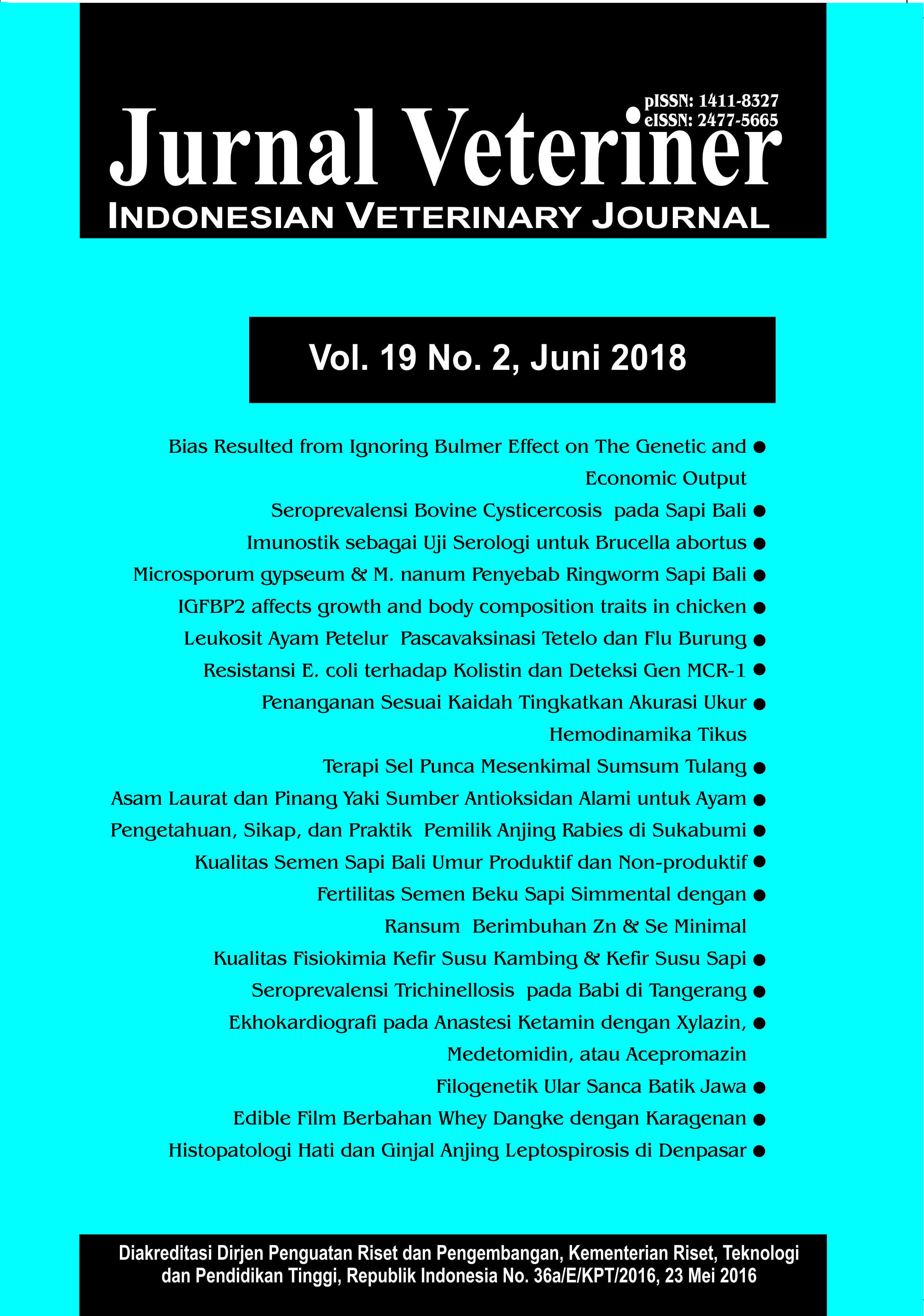Ekhokardiografi Kinerja Jantung Kelinci pada Anastesi Ketamin yang Dikombinasikan dengan Xylazin, Medetomidin, atau Acepromazin (HEART RABBIT PERFORMANCE ECHOCARDIOGRAPHY IN KETAMINE ANESTHESIA COMBINED WITH XYLAZINE, MEDETOMIDINE, OR ACEPROMAZINE)
Abstract
Ketamine is anesthesia that commonly used in the rabbit’s surgery as animal model often combined with transquilizer. The aim of this study is to evaluate the rabbit’s cardiac performance after administration of ketamine anesthesia combined with transquilizer. A total of 24 rabbits of New Zealand White strain were divided into four treatment groups, namely ketamine 40 mg/kg BW, combination of ketamine 10 mg/ kg BW and xylazin 3 mg/kg BW, ketamine 10 mg/kg BW and medetomidin 0.125 mg/kg BW and ketamine 10 mg/kg BW and acepromazin 1 mg/kg BW group. Evaluation were performed at 15, 30, 45 and 60 minutes after administration of anesthesia. Evaluation of cardiac performance using echocardiography on heart rate, stroke volume, ejection fraction, fractional shortening and cardiac output. The results showed that the heart rate in all treatment groups decreased along with observation time, except the ketamine group increased after 45 minutes. The stroke volume, cardiac output and fractional shortening in all treatment groups was stable, and the value was not significantly different among time observation (P> 0.05). The ejection fraction of the ketamine combined with transquilizer showed had the same pattern, decreasing at the 30 minutes observation followed by increasing at 45 and 60 minutes observation, while the ketamine group increased at 45 minutes but decreased again at minute 60. The lowest ejection fraction score was seen in the ketamine group. The research suggest that administration of ketamine with combined transquilizer medetomidin showed the most stable cardiac performance during observation.



















